Reviewing the Best Sailboats for 2024
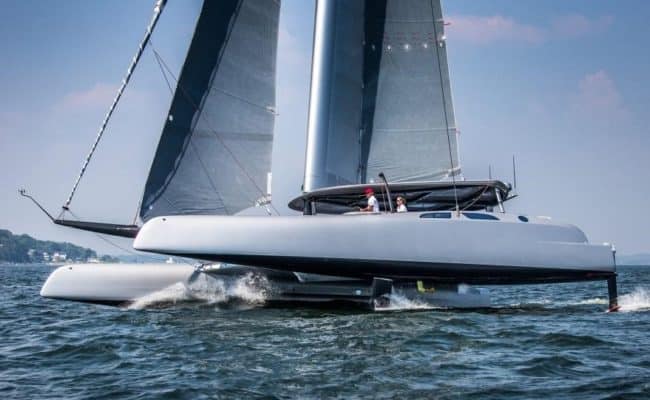
Eagle Class 53
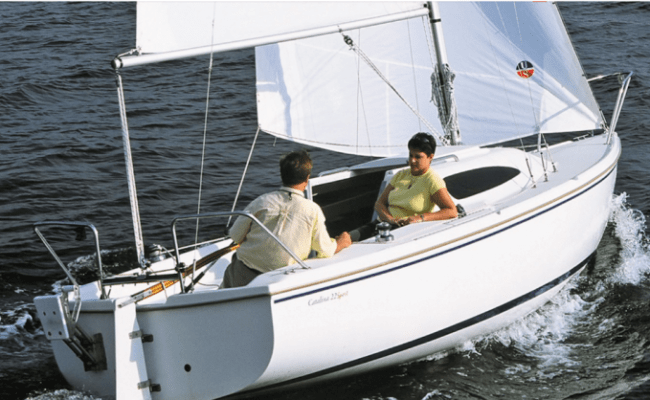
Catalina 22 Sport
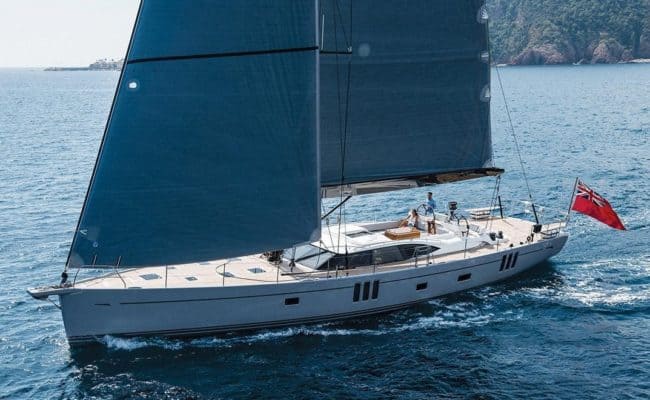
Oyster 745
For some, there are fewer things in the world that trump the sheer joy you get from enjoying some water sports . There’s something so surreal about floating in the middle of the sea, surrounded by water on all sides stretching out to infinity. It’s truly a sight to behold.
Now, if you thought the feeling you get onboard a basic motor-powered boat was exhilarating, you haven’t had the sailboat experience. There’s no better way to enjoy nature than cruising stealthily through the water silently, using nothing but the wind to propel you forward.
Now, that, ladies and gentlemen, is how you take in the majesty and magnificence of the sea.
If you’re in the market for a new boat, we’ve put together a comprehensive review of the best sailboats, as well as a buying guide to help you pick the right one.
Eagle Class 53

The Eagle Class 53 is specially designed to deliver the high performance of a competitive racing beast to the recreational user. Its core is all-carbon and is capable of achieving top speeds of 25 to 35 knots in light wind conditions.
For a leisurely weekend cruise on the open water, the Eagle has a pretty spacious cockpit that’s outfitted with a hard-carbon bimini to keep the sun out on hot days. It offers plenty of padded seating and even comes with an onboard wet bar aft. It doesn’t get any better than that.
Pros
● Has a carbon-fiber wing that can rotate 360 degrees
● Ideal for competitive and recreational sailing
● Hybrid wing allows for excellent control even in high winds
Cons
● The aft-helm configuration may impede the visibility of the opposite bow
Catalina 22 Sport

You don’t have to break the bank to become a sailboat owner, nor do you have to settle for a used one either. You can get a fantastic sailboat that’s fresh-off-the-factory and fully-loaded with all the latest gear and boating accessories, for anywhere between $20,000 and $100,000.
The Catalina 22 Sport is a prime example of a swanky-looking sailboat that costs under $40,000. It comes with a retractable keel and is ideal for family racing. Its standard features include a roller-furling jib, fractional rig, in addition to an open cabin that has enough room to sleep a small family of four. It also comes with an efficient mast-raising system for easy launching.
Pros
● Great value for money
● Ideal for small families
● Efficient mast-raising system
Cons
● Interior upholstery looks a bit dated
Tiwal 3 (Best Inflatable Sailboat)
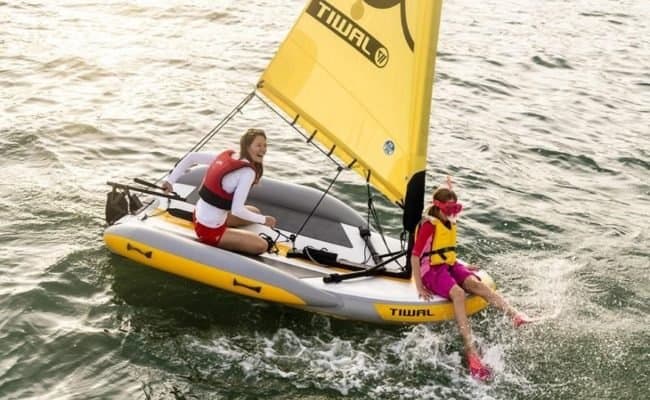
If you’re new to the sailing world, an inflatable sailboat might be what you need to get started. They are lightweight, easy to store, and don’t cost nearly as much as conventional sailboats do.
Tiwal 3 is a great option for both kids and adults. The hull is high-pressure inflated, making it almost as rigid as a regular epoxy one. It has a 56-foot squared sail that can withstand high winds of up to force 4 and offers a surprising amount of power for its mast height.
Pros
● Affordable
● Ideal for beginners
● Compact and portable
Cons
● Does not come with comfort and convenience amenities
Beneteau Oceanis 38 Weekender (Best Weekender Sailboat)
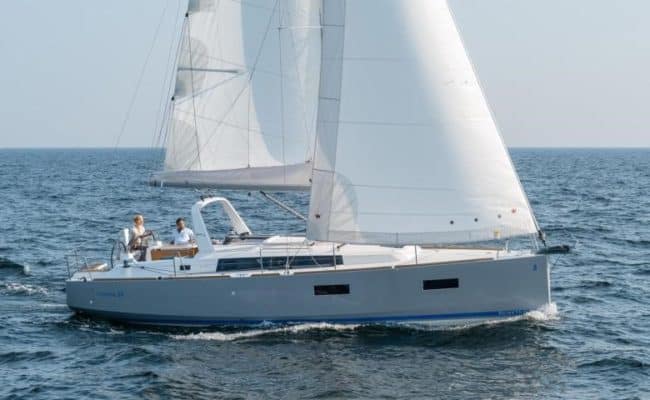
The best thing about a weekender is the fact that it allows you to get away from the hustle and bustle of everyday life to spend a couple of days on the water. The Beneteau Oceanis 38 Weekender is the perfect sailboat for this.
It comes with the option of a two/three-cabin plan, fitted galley, helmsman’s seats, shower, and an additional inside/outside table. The saloon and the master stateroom are separated by a removable bulkhead that can be installed to partition the space if you need more privacy.
Pros
● Ideal for a family weekend getaway
● Beautiful interior fittings
● Removable bulkhead for added privacy
Cons
● May not be suitable for an extended stay
Marlow-Hunter 22 (Best Daysailer)

If you’re not looking for a 30-foot plus sailboat with a galley and built-in bunks, then a daysailer is precisely what you need to hit the open ocean, enjoy a day out, and head back home when you’re done. The Marlow-Hunter 22 is the perfect daysailer for you and your family/friends, with excellent overnighting capability if you need it.
It has a big enough cockpit for the crew and can comfortably accommodate up to five people at any given time. Standard features include a laminated fiberglass deck and hull, twin bunks, a hydraulic raising centerboard, and non-skid flooring.
Pros
● Perfect for day sailing
● Has overnighting capability
● It is quite affordable compared to other sailboats in its class
Cons
● Sleeping quarters can get a bit cramped
Hobie Mirage Adventure Island (Best Multihull Sailboat)
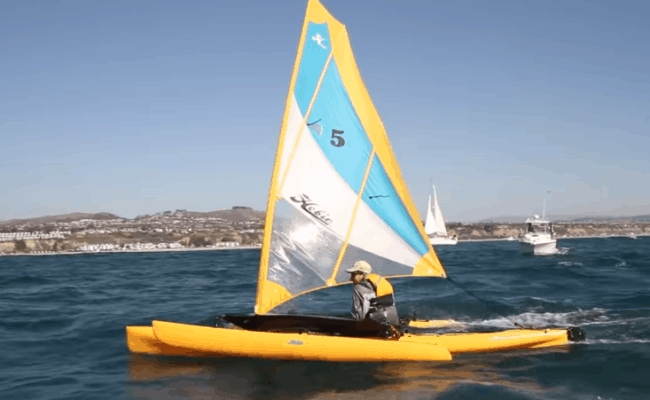
The Hobie Mirage Adventure Island is a multihull sailboat built for adventure. It has a built-in retractable centerboard that comes in handy to prevent lateral slip, and a 16-foot long vertically-battened mainsail to give you the lift you need to propel you forward.
You might also like the built-in multiple storage hatches for long days spent out on the water and the fully-adjustable Vantage CT Seating for extra comfort. Standard features include roller furling mainsails, ST Turbo kick-up fins, pivoting crossbars, and outriggers for added stability on the water.
Pros
● Easy to transport and launch
● Paddling option for non-windy days on the lake
● Molded-in rod-holders are perfect for anglers
Cons
● Not designed for very tall individuals, particularly when the sail is furled
Oyster 745

Living on the water and cruising around the world is, no doubt, an exciting lifestyle. Now, unless you intend to sleep under a canvas tarp, you need to get a sailboat that has a proper cabin. The Oyster 745 is one of the best liveaboard sailboats we’ve come across so far.
Standard features include a spacious owner’s cabin, four double en-suite guest cabins, crew quarters, forced air ventilation, a flush teak deck, ample storage, large tankage, and lots more. It also has a Cummins turbocharged engine, which comes in handy during windless days.
Pros
● Spacious enough for a large family and small crew
● Excellent ventilation
● Has an engine for windless days
Cons
● Price is on the higher end of the spectrum
West Wight Potter 19 (Best Trailerable Sailboat)
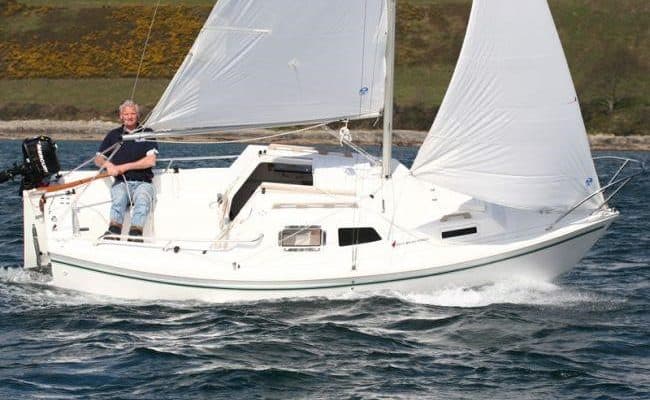
If you’re looking for a small sailboat that you can easily tow from your house to the sea, the West Wight Potter 19 is the ultimate trailer cruiser. It offers exceptional stability and handling and looks stunning while doing it.
It is designed with a fully retractable galvanized keel, which makes it ideal for going ashore in remote areas. Standard interior features include four sleeping berths, ample lockable storage, main and lapper sails, marine cooking stove, sink, faucet, porta-potty, adjustable transom motor mount, and lots more.
Pros
● Trailerable
● Plenty of comfort and convenience features and amenities
● Unsinkable design
Cons
● The hull has hard chines
J/Boats J/97E (Best Performance Cruiser)
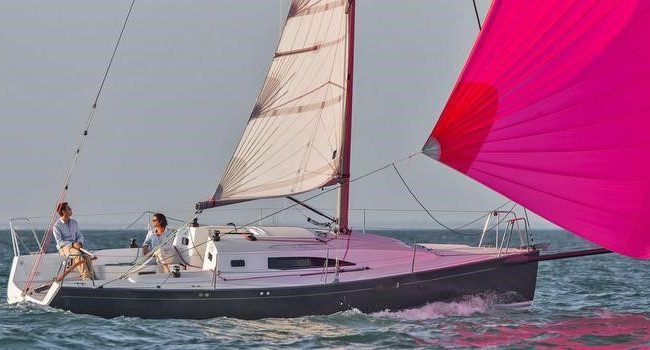
If you’re in the market for a high-performance sailboat with cruising capability, then you’ll love the J/Boats J/97E. It is easy to drive, provides excellent handling and unmatched stability even in rough sea conditions.
The cockpit is one to behold. It has standard tiller/wheel steering, an open transom, and full-length seats with backrests. The retractable bowsprit comes with a spinnaker allowing you to get the best performance out of your boat without having to retain skilled crew.
It can comfortably accommodate 3-4 people in the sleeping quarters and has the option of adding a boom tent to further expand the living space.
Pros
● High performance cruising capability
● Excellent stability
● Ideal extended stay
Cons
● No designated owner’s cabin
Buyer’s Guide to Choosing the Best Sailboats
Sailboats don’t come cheap. So, if you end up buying the wrong one, well, let’s just say you’re stuck with it. It is, therefore, very important that you take your time and apply some logic to avoid regret later on. Here are the major factors you need to consider when choosing the best sailboats.
1. Size of the Boat
The first thing you need to consider is the size of the boat you need. Do you intend to be cruising in the company of friends and family, or do you plan to do it by yourself?
Will you have a crew with you when you embark on your sailing expeditions, or will it be purely for entertainment? Will you be living in your boat full-time, or do you intend to use it only on the weekends?
The answers to these questions will determine the size of the boat you’ll need.
Bigger Isn’t Always Better
Many first-time boat buyers often make the mistake of thinking that getting a large boat is the best decision since they plan to have it for decades to come. They look for one that will meet every single one of their present and future needs. Here are a couple of reasons why bigger isn’t always better when buying a sailboat.
- Safety considerations – You require a substantial amount of skill to operate a large boat. If you’re not all that skilled and end up purchasing a big boat, you’re essentially endangering your life and that of the other boaters.
- Learning curve – It’s easier to pick up on the nuances of operating a smaller sailboat than it is a larger one since the feedback you get is almost instant. This makes it easier to learn as you work your way up to larger vessels. The learning curve on a big boat, however, is pretty steep, and critical errors can cost you a lot more than you bargained for.
- Associated costs – The rule of thumb to remember is: The larger a boat is, the higher its associated costs will be. Don’t buy a boat designed for the open seas if you intend to be using it on small bays.
- Low resale value – There’s also the risk of buying a boat that’s too big, only to regret your decision a few short sails later. The unfortunate reality is – you might be stuck with it for several years to come since it’s quite difficult to sell large vessels.
2. Boating Location
Next, you need to think about is – where you’ll be boating. Sailing on Lake Michigan, for instance, is vastly different from sailing on the Atlantic. The same logic applies when boating on smaller rivers.
If the water isn’t deep enough, based on how far down into the water your keel goes, let’s just say you’ll be in for an unpleasant grounding experience. You need to pick the right vessel for the environment you’ll be sailing in.
3. Boating Experience
If this is your first-ever sailboat (or any boat for that matter), then going with a large model is probably not the best thing. We’ve all heard the horror stories of people who purchased boats that were too big, only for them to end up losing control of their vessels in the open water.
We recommend starting small and working your way up from here as you gain more experience.
4. Use of the Boat
We touched a bit on this in the preceding sections. But, in this case, we mean “use” in reference to your budget.
If you want to buy a sailboat primarily for entertaining, then you need to get one that’s large enough to host the number of people you intend to have onboard. Keep in mind, though, that it may be at the expense of certain luxury, convenience, and comfort features.
Likewise, you might find a sailboat with loads of useful amenities, but without enough space to accommodate the people who might enjoy them. There’s no point in buying a boat that comes with a kitchen and grilling station, but without enough room to accommodate the number of people who might enjoy fresh grilled fish. Or maybe you want a boat that only you will use – in which case you may prefer one with a comfortable and attractive cockpit for yourself, seeing as you’ll be the main person enjoying it.
Size generally trumps luxury when buying a sailboat. Then again – it depends on what you intend to use it for.
5. New vs. Used Sailboats
The other thing you need to think about is whether you’re buying a new or used sailboat. Each option has its own set of pros and cons. For one thing, buying a brand new boat means that it’s ready to hit the open waters the moment you own it.
On the other hand, buying a used sailboat means that you may have to make repairs and upgrades before you can set sail. You also have to think about the costs associated with such repairs and the time required to do all the legwork to get the right gear.
So, ensure that you factor in these costs when coming up with your boat budget. That way, you’ll be able to tell if it makes sense to buy a new boat versus a used one, based on the overall cost for each. Don’t buy a lemon that turns into an infinite money-pit all in the name of saving a couple of bucks.
What to Check for When Buying a Used Sailboat
If you’re going the previously-owned route, here are a couple of things you need to check for before you sign on the dotted line.
- Deck and hull – Check that the deck and hull are dry and intact. If not, you’ll have to budget for repairs if you go ahead with the purchase.
- Electrical work – Rewiring a boat is a very complex and expensive process. Get a certified electrician to examine the existing electrical work before you buy a used boat.
- Engine – It’s always a good idea to bring a mechanic onboard during the purchase process just to make sure that everything is in excellent working condition. They are better-placed to give you a true picture of the boat’s existing state.
- Safety equipment – Last but not least, you need to keep in mind that insurance service providers usually require sailboats to have a minimum amount of safety equipment onboard. If anything is missing from the boat you’re about to purchase, you will need to buy them, which will no doubt drive up the cost.
6. Recurring Costs
The recurring costs associated with owning a sailboat aren’t exactly cheap. Buying the vessel is only one part of the process.
You’ll need to pay for insurance, which is more expensive for larger boats. You also need to think about storage costs if you don’t own property on the waterfront. There’s also the cost of docking and mooring at the various locations you visit.
So, when calculating your overall budget, don’t forget to factor in these costs as well.
Research, Research, Research
When looking for the best sailboats, ensure that you do your homework. Otherwise, you could be setting yourself up for years of additional expenses, work, stress, and heartache.
Get something ideal for your needs and won’t take up too many resources in maintenance and upkeep. All in all, with the right sailboat, you’re in for one helluva ride! Any of the 9 best sailboats detailed in this guide are excellent options worth looking into.
In the meantime, if you’re in the market for a new pontoon boat, check out our comprehensive review on the 10 best pontoon boats.
Categories: Boats











